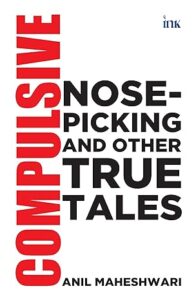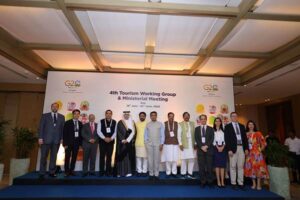Kick-starting an economic revival
Ravi Shanker Kapoor | May 30, 2015 4:02 am

When Narendra Modi took oath as Prime Minister on May 26, 2014, there were great expectations from him making decisive moves to put the economy back in recovery mode and on to a high growth trajectory of a ‘10+’ per cent per year growth rate. It is ‘10+’ because the Finance Ministry had chosen to use Paasche’s Index instead of Laspeyres Index to calculate growth rate, which, under present inflationary conditions, will artificially raise growth rate figures (see Paul Samuelson and Subramanian Swamy, “Invariant Economic Index numbers and Canonical Duality”, American Economic Review, 1974, and also Economic Journal, 1984 for the reasons.)
Hence, what I have been stating in the past, of a 10 per cent growth rate target as being desirable is now, by the Finance Ministry’s revaluation of index numbers, more than a 10 per cent target now, perhaps even 12 per cent.
The blueprint for such a recovery, to a ‘10+’ growth rate, had already been prepared before the general election, and the steps to be taken were documented by a committee of the Bharatiya Janata Party. Nitin Gadkari, now Union Minister for Road Transport, Highways and Shipping, had been entrusted with task. On his suggestion, I had collaborated with a number of committed intellectuals to produce a ‘Vision Document 2020’, a road map for Mr. Modi to implement as soon as he became the Prime Minister. These steps have still to be taken.
Regressive markers
The regressive markers in the projected path of the economy today make it worrisome as these indicate that if not rectified soon, the Indian economy can go into a tailspin. Though these markers are a consequence of the disastrous tenure of the previous government, now nearly a year on, they cease to be a credible excuse.
Some of these markers are: the Basel III norms for banks (effective from 2018) which require Rs.2,40,000 crore for capitalisation. Moreover, to retain 51 per cent of the equity of public sector banks by the government, it will need, this financial year, Rs.1,21,000 crore. The 2015-16 Budget has provided for only Rs.11,200 crore, which is not even a tenth of this. With rising non-performing assets of banks, there is a risk of a banking crash much like the 1997-98 East Asian crash.
This year, the rainfall deficit affecting 67 per cent of the single crop farmers, will cause inflationary pressures and a substantial shortfall in production, thus causing more misery to the farmer. While rainfall is in nobody’s control, the economy, even today, lacks the necessary financial cushion to absorb the liabilities arising from crop failure and farmer destitution.
The rupee is on the edge of a fall as it happened in 2012-13. This is because there has been a large-scale sell-off or dumping of shares of Indian companies purchased by foreign investors earlier last year. Some foreign direct investment (FDI) companies have also pulled out. The fall in the rupee was a little moderated three months ago, but for the wrong reason: the increased inflow of funds from the subversive, corroding, money-laundering Participatory Notes (PN) derivative. But PNs are hot money derivatives and so can be pulled out anytime to cause a further devaluation of the rupee.
All these destabilizing trends have had a profound impact on the stock market. One of these is in the form of market valuations now being well below the long-term average and even below the level in 2013. Therefore, it is no surprise that the top 10 corporate entities have reached a stage where their annual profits do not cover even their yearly debt repayments.
Negative factors
While India has demonstrated impressive prowess in IT, biotechnology, automobile ancillaries and pharmaceuticals, and has also accelerated its growth rate to become the third largest nation in terms of GDP at PPP rates, nevertheless, it still has a backward, agricultural sector employing 62 per cent of the labour force and where farmers are ending their lives unable to repay their loans.
The Indian economy is also saddled with a national unemployment rate that is over 15 per cent of the adult labour force, and a prevalence of child labour arising out of nearly 50 per cent of children not making it to school beyond standard five, a deeply malfunctioning primary and secondary educational system, 300 million illiterates and 250 million people in a dire state of poverty.
Moreover, India’s educated youth is skill deficient, risk averse in attitude and largely unemployable in the cutting-edge manufacturing sector. According to Macaulay’s Minute on Education, our universities still produce clerks for government administration and not innovators of the future.
Besides these, India’s infrastructure is in a pathetic state, with frequent power breakdowns even in metropolitan cities, a dangerously unhealthy water supply system in urban areas, and a very poor road network where there are gaping holes even on the National Highways.
India’s infrastructure requires about $150 billion to make it world class, while the education system needs six per cent of GDP instead of 2.8 per cent today.
Need for reform
These problems can be addressed only by comprehensive, second generation, systemic reform that makes the economy an efficient, competitive market oriented one that leverages our potentialities (such as our civilizational heritage of innovative intellect), and which minimises the inefficiency, squandering and corruption in the deployment of our vast resources.
India has much potential today to become a booming economy; it has a demographic dividend of a young population of average age of 28 years compared to China’s 35 years, the U.S.’s 38 years, Europe’s 46 years and Japan’s 49 years.
Internationally, Indian agriculture has the lowest yield in land and livestock-based milk products whose yield can easily be raised judging by the performance in experimental agricultural plots of the Indian Agricultural Research Institute (IARI) and the Indian Council of Agricultural Research (ICAR) and by also borrowing agricultural techniques from Israel. Indian agriculture and milk products are also internationally at a low cost of production. With proper infrastructure and packaging, India can certainly become a global player in agricultural exports.
Even though India is also gifted with a full 12 months a year of farm-friendly weather, it grows just one crop a year in over 75 per cent of arable land when it can grow three crops a year. It also has the advantage of a highly competitive, skilled labour force and low wage rates at the national level, the advantages of which have been already proved to the world by the outsourcing phenomenon. What is needed is a bold commitment of sufficient resources to harvest this potential.
An open competitive market system can find these resources as has been demonstrated in the auction of the 2G Spectrum licences if the quality of governance and accountability is improved.
A transparent policy regime, auctioning of natural resources (if it is used for commercial private enterprise), and the unearthing of the vast $1.5 trillion in black money stashed abroad will enable the government to marshal sufficient resources for a massive investment in a second generation economic reform while reducing the tax burden on people.
As an economist, the only advice I can give the Modi government is to take some steps that will raise the morale of the consumer and investor. That means income tax abolition and reducing the annual interest rate to nine per cent.
The good news is that the built-in potential in the economy is easy to tap for revival, as is the basic resilience of the Indian people to face any situation as demonstrated from past crises.
Only one year of the mandate has elapsed, so there is still time to make the necessary course correction and put India on a fast, 12 per cent growth trajectory.






























